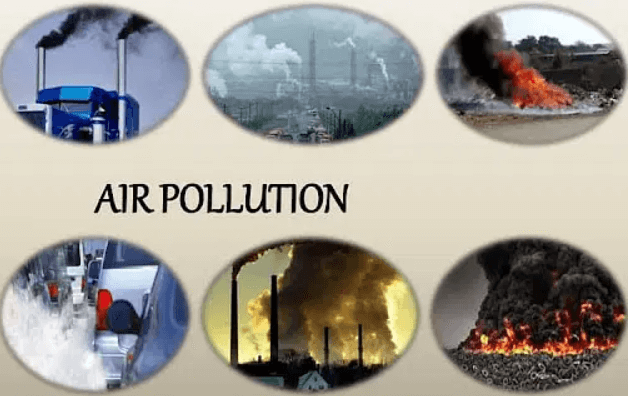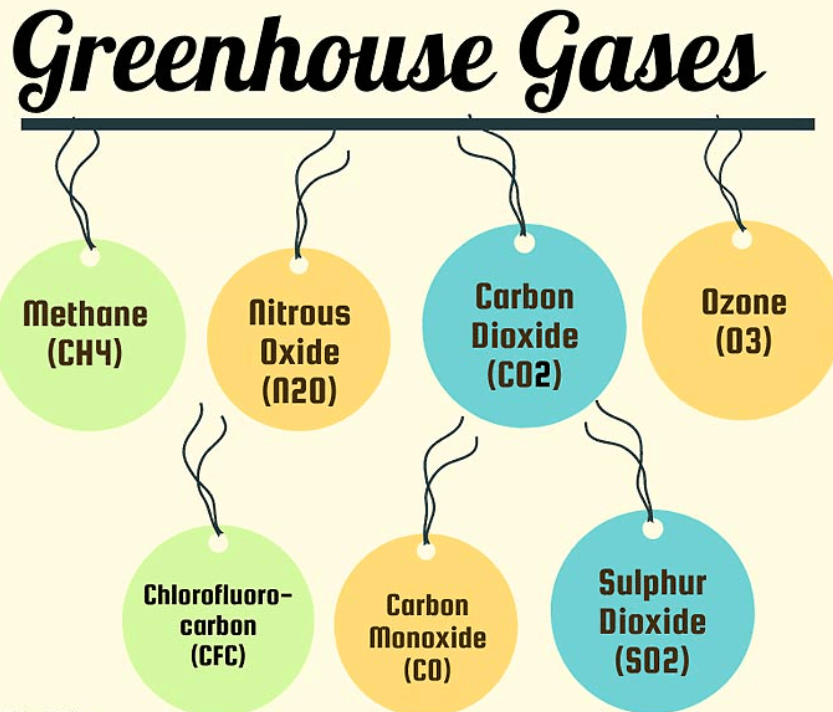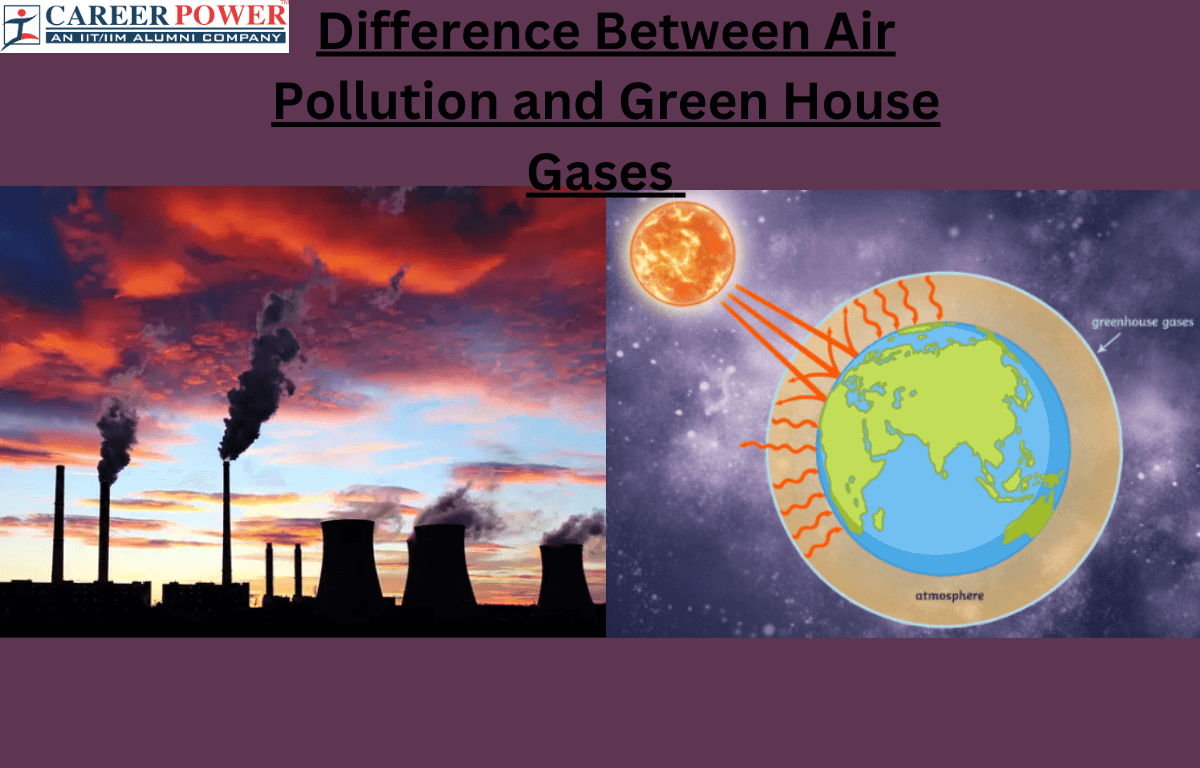Air pollution and greenhouse gases are related concepts, but they refer to different aspects of the environmental issues associated with the quality of the air we breathe and the Earth’s climate system. Air pollution encompasses a wide range of harmful substances present in the air, affecting both human health and the environment, while greenhouse gases specifically refer to gases that contribute to the greenhouse effect, influencing the Earth’s climate. While some air pollutants are also greenhouse gases, not all pollutants have significant greenhouse effects. Here we have discussed a few differences between air pollution and greenhouse gases.
Air Pollution and Green House Gases
Addressing air pollution and reducing greenhouse gas emissions is critical for mitigating climate change, protecting public health, and preserving the environment. Efforts to combat these issues include transitioning to renewable energy sources, promoting energy efficiency, implementing sticker emissions regulations, and encouraging sustainable practices in various sectors.
What is Air Pollution?
Air pollution refers to the presence of harmful or excessive qualities of substances, including gases, particulates, and biological molecules, in the Earth’s atmosphere. These pollutants can come from natural sources or human activities and can have determinantal effects on human health, animals, plants, and the environment. Reducing air pollution involves implementing regulations and policies to limit emissions from industries and vehicles, promoting the use of cleaner technologies, and raising awareness about the importance of air quality for public health and the environment.

Common Air Pollutants Include
- Particulate Matter (PM): Tiny particles suspended in the air, including PM2.5 (particles with a diameter of 2.5 micrometers or smaller) and PM10 (particles with a diameter of 10 micrometers or smaller). These particles can be solid or liquid and can come from vehicle emissions, industrial processes, and natural sources like wildfires.
- Nitrogen Oxides (NOx): Gases produced from combustion processes, primarily in vehicles to the formation of smog and acid rain and can irritate the respiratory system.
- Sulfur Dioxide (SO2): A gas produced by burning fossil fuels containing sulfur, such as coal and oil. It contributes to acid rain and can cause respiratory problems.
- Ozone (O3): While ozone in the upper atmosphere (stratosphere) protects us from the sun’s ultraviolet rays, ground-level ozone is a harmful air pollutant. It forms when pollutants like NOx and VOCs react in the presence of sunlight. High levels of ozone can cause respiratory issues, especially in vulnerable populations.
What are Green House Gases?
Greenhouse gases (GHGs) are gases that trap heat in the Earth’s atmosphere, leading to the greenhouse effect and contributing to global warming and climate change. These gases allow sunlight to enter the Earth’s atmosphere but prevent some of the heat that the Earth absorbs from escaping back into space. As a result, the Earth’s surface temperature rises, creating a warmer climate. The primary greenhouse gases include carbon dioxide (CO2), Methane (CH4), Nitrous Oxide (N2O), and Fluorinated Gases.

Water vapor is also an important greenhouse gas, but its concentration in the atmosphere is primarily controlled by natural processes. Unlike other greenhouse gases, human activities do not directly emit significant amounts of water vapor into the atmosphere.
The increased concentrations of these greenhouse gases due to human activities have intensified the natural greenhouse effect, leading to global warming and climate change. Efforts to mitigate climate change often focus on reducing emissions of these gases, transitioning to renewable energy sources, and promoting energy efficiency and sustainable practices across various sectors.
Difference Between Air Pollution and Green House Gases
As we know air pollution is dirty air filled with harmful particles, like smoke and dust, which can make it difficult to breath and harm our health. On the other hand, greenhouse gases are like a blanket around the Earth. They trap heat, causing the planet to get warmer, leading to climate change. So air pollution affects our immediate surroundings, while greenhouse gases impact the Earth’s overall temperature. Here we have tabulated a few differences between air pollution and greenhouse gases.
| Differences Between Air Pollution and Green House Gases | ||
| Aspect | Air Pollution | Green House Gases |
| Definition | Air pollution refers to harmful substances in the air. | Greenhouse gases are those gases that trap heat in the atmosphere. |
| Composition | Air pollution includes particulate matter, chemicals, etc. | Greenhouse gases mainly consist of carbon dioxide, methane, and water vapor. |
| Source | Air pollution comes from vehicles, industry, burning fossil fuels, etc. | Greenhouse gases come from natural sources (e.g., volcanoes) and human activities (burning fossil fuels). |
| Effects | Air pollution causes respiratory diseases, acid rain, etc. | Greenhouse gases contribute to global warming and climate change. |
| Visibility | Air pollution is often visible as smog or haze. | Greenhouse gases are invisible gases. |
| Longevity | Some pollutants dissipate quickly, while others persist for a long time. | Greenhouse gases can stay in the atmosphere for years to centuries. |
| Regulation | Air pollution is regulated by environmental agencies. | Greenhouse gases are regulated under international agreements like the Paris Agreement. |
| Health Impact | Directly impacts human health and can lead to premature deaths. | Indirect impact on health through climate change-related events. |
| Mitigation | Air pollution can be reduced through emission control and alternative energy sources. | Mitigated by reducing emissions, afforestation, and sustainable practices. |
| Global Impact | Air pollution has local and regional effects. | Greenhouse gases affect the planet on a global scale |
Causes of Air Pollution and Greenhouse Gases
Here we have addressed some of the sources and transitioned to cleaner energy sources and sustainable practices is essential to mitigating air pollution and reducing greenhouse gas emission.
Causes of Air Pollution
Air pollution is primarily caused by various human activities and natural processes. Some common causes include:
- Burning Fossil Fuels: The combustion of coal, oil, and natural gas for energy and transportation releases pollutants such as particulate matter, sulfur dioxide (SO2), and nitrogen oxides (NOx) into the air.
- Industrial Emissions: Factories and industrial facilities emit pollutants like chemicals, particulate matter, and gases as byproducts of manufacturing processes.
- Vehicle Emissions: Cars, trucks, and other vehicles emit pollutants like carbon monoxide (CO), nitrogen oxide (NOx), and hydrocarbons due to greenhouse gas accumulation.
- Agricultural Activities: Livestock farming produces methane (CH4), a potent greenhouse gas. Additionally, agricultural practices can lead to ammonia emissions and the release of nitrous oxide (N2O) from fertilizers.
- Waste Disposal: Landfills and waste incineration release methane and other harmful chemicals into the air.
- Natural Sources: Volcanic eruptions, wildfires, and dust storms release particulate matter and gases into the atmosphere naturally. While these events are natural, human activities can exacerbate their impact.
Causes of Greenhouse Gases
Greenhouse gases, which contribute to global warming and climate change, include:
- Carbon Dioxide (CO2): Mainly produced from burning fossil fuels, deforestation, and certain industrial processes.
- Methane (CH4): Released during the production and transport of coal, oil, and gas, livestock digestion, and decay of organic waste in landfills.
- Nitrous Oxide (N2O): Emitted from agricultural and industrial activities, as well as during the combustion of fossil fuels and solid waste.
- Fluorinated Gases: Various synthetic gases used in industrial applications, registration, and air conditioning, which have high global warming potential.



 50 Vegetables Name for Kids in English a...
50 Vegetables Name for Kids in English a...
 Food Chain: Definition, Types, Examples,...
Food Chain: Definition, Types, Examples,...
 Human Respiratory System: Definition, Di...
Human Respiratory System: Definition, Di...













